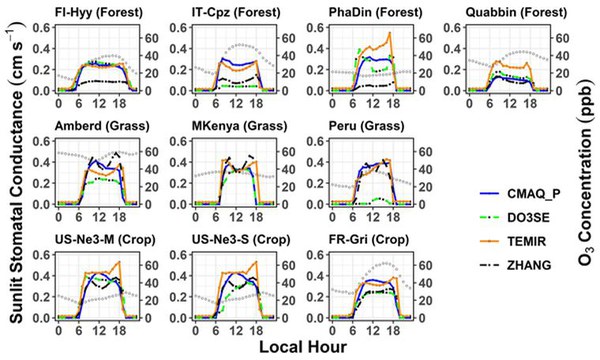Can atmospheric chemistry deposition schemes reliably simulate stomatal ozone flux across global land covers and climates?
Emmerichs, T., Al Mamun, A., Emberson, L., Mao, H., Zhang, L., Ran, L., Betancourt, C., Wong, A., Koren, G., Gerosa, G., Huang, M., and Guaita, P.
Abstract

Over the past few decades, ozone risk assessments for vegetation have evolved two methods based on stomatal O3 flux. However, substantial uncertainties remain in accurately simulating these fluxes. Here, we investigate stomatal O3 fluxes across various land cover types worldwide simulated by six established deposition models. Hourly O3 concentration and meteorological data at nine sites were extracted from the Tropospheric Ozone Assessment Report (TOAR) database, a comprehensive global collection of measurements, for the model simulations. The models estimated reasonable O3 deposition (0.5–0.8 cm s−1 in summer), which is mostly in agreement with the literature. Simulations of canopy conductance showed differences that varied by land cover type with correlation coefficients of 0.75, 0.80, and 0.85 for forests, crops, and grasslands among the models. Differences between models were primarily influenced by soil moisture and vapour pressure deficit, depending on each model's specific structure. Across models, the range of O3 damage simulations at each site was most consistent for crops (6 to 11 mmol O3 m−2), followed by forests (3 to 19.5 mmol O3 m−2) and grasslands (7 to 33 mmol O3 m−2). The median estimate across models aligns well with the literature at the sites most vulnerable to O3 damage. Overall, this study represents a critical first step in developing and evaluating tools for broad-scale assessment of O3 impacts on vegetation within the framework of TOAR phase II.
